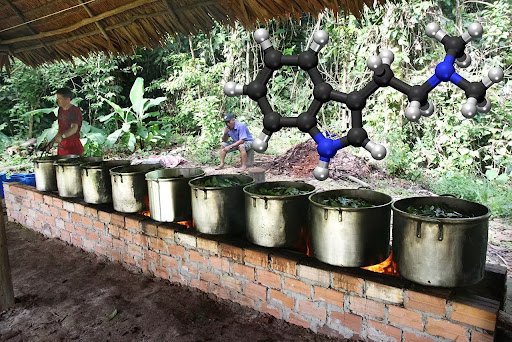The natural world is home to a vast array of plants that have been used for centuries in spiritual, medicinal, and recreational contexts. Among these, the DMT plant stands out due to its powerful psychoactive properties and its role in expanding human consciousness. As interest in psychedelic substances grows, so does the need for psychedelic continuing education to better understand the implications, benefits, and risks of these fascinating plants.
What is the DMT Plant?
Understanding DMT and Its Origins
DMT, or N,N-Dimethyltryptamine, is a naturally occurring psychedelic compound found in numerous plants around the world. It is known for producing intense, short-lived, yet profound psychedelic experiences often described as spiritual or mystical. The DMT plant refers to various species containing significant amounts of this compound, including Psychotria viridis, Mimosa hostilis, and Desmodium gangeticum.
Historical and Cultural Significance
For thousands of years, indigenous cultures in South America have used plants containing DMT in their traditional rituals. The most well-known of these is the preparation of ayahuasca, a brew combining the DMT-containing leaves of Psychotria viridis with the vine Banisteriopsis caapi, which contains MAO inhibitors allowing the DMT to be orally active. This sacred brew has been used for healing, divination, and spiritual awakening, illustrating the deep-rooted connection between the DMT plant and human culture.
The Science Behind the DMT Experience
How DMT Interacts with the Brain
DMT acts on serotonin receptors in the brain, primarily the 5-HT2A receptor, which plays a critical role in mood, perception, and cognition. When consumed, DMT induces altered states of consciousness characterized by vivid visual hallucinations, altered sense of time, and feelings of unity or transcendence. Despite its potent effects, the biochemical action of DMT is remarkably rapid, with experiences typically lasting between 5 to 30 minutes when smoked or vaporized.
The Role of the DMT Plant in Modern Psychedelic Research
Recent scientific studies have reignited interest in DMT for its potential therapeutic uses, such as treating depression, PTSD, and addiction. The DMT plant, once confined to traditional use, is now at the forefront of psychedelic research, offering a new frontier in mental health treatment. Understanding the molecular pathways influenced by DMT is crucial in harnessing its therapeutic potential safely and effectively.
Psychedelic Continuing Education: The Need for Awareness
Why Education About Psychedelics Matters
As psychedelics like DMT move from the fringes of society into mainstream consciousness, the importance of psychedelic continuing education cannot be overstated. Education helps demystify these substances, reduce stigma, and provide accurate information about safe use, legal status, and scientific findings.
Key Areas of Focus in Psychedelic Education
Psychedelic continuing education typically covers several vital aspects:
- History and ethnobotany: Understanding the cultural contexts and origins of psychedelic plants.
- Pharmacology: How psychedelics affect brain chemistry and consciousness.
- Therapeutic applications: Current and emerging medical uses.
- Safety and risk management: Harm reduction strategies, contraindications, and legal considerations.
- Integration: Methods for incorporating psychedelic experiences into everyday life meaningfully.
By addressing these areas, psychedelic education empowers individuals, healthcare providers, and policymakers to make informed decisions regarding these substances.
The Intersection of the DMT Plant and Modern Psychedelic Education
Bridging Tradition and Science
The DMT plant embodies a bridge between ancient knowledge and cutting-edge science. Psychedelic continuing education programs often highlight this plant as a case study in how traditional practices can inform modern therapeutic techniques. For example, the ritualistic use of ayahuasca provides insights into setting, intention, and community support — all factors that improve the outcomes of psychedelic therapy.
Ethical and Environmental Considerations
Education also raises awareness about the ethical sourcing of DMT plants. Increased global interest has led to overharvesting in some regions, threatening biodiversity and indigenous livelihoods. Responsible education promotes sustainable harvesting practices and respects indigenous intellectual property, ensuring the DMT plant remains accessible for future generations.
The Future of Psychedelic Continuing Education and the Role of the DMT Plant
Expanding Accessibility and Knowledge
As psychedelic therapy gains legitimacy, continuing education will play a crucial role in training clinicians, therapists, and users. The DMT plant will likely remain a focal point due to its profound effects and historical significance. Educational initiatives can help standardize best practices, foster scientific inquiry, and advocate for compassionate drug policies.
Integrating Psychedelic Wisdom Into Mainstream Health
The ultimate goal of psychedelic continuing education is to integrate the healing potential of plants like those containing DMT into holistic health frameworks. This includes blending traditional wisdom with empirical research, creating a comprehensive understanding of psychedelics that respects both science and spirituality.
Conclusion
The DMT plant is more than just a source of a powerful psychedelic; it is a key to understanding consciousness, culture, and healing. As society embraces the potential of psychedelics, psychedelic continuing education becomes essential to navigate this complex and promising field. Through education, we can honor the legacy of the DMT plant, ensure its ethical use, and unlock new possibilities for mental and spiritual well-being. Whether you are a curious learner, a medical professional, or an advocate, engaging with psychedelic education offers a pathway to deeper knowledge and transformative growth.








